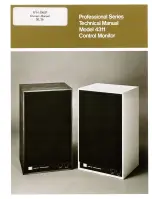
Turn the transcever power off n the followng locatons:
• In explosve atmospheres (nflammable gas, dust partcles,
metallc powders, gran powders, etc.).
• Whle takng on fuel or whle parked at gasolne servce statons.
• Near explosves or blastng stes.
• In arcrafts. (Any use of the transcever must follow the
nstructons and regulatons provded by the arlne crew.)
• Where restrctons or warnngs are posted regardng the use of
rado devces, ncludng but not lmted to medcal facltes.
• Near persons usng pacemakers.
• Do not dsassemble or modfy the transcever for any reason.
• Do not place the transcever on or near arbag equpment whle
the vehcle s runnng. When the arbag nflates, the transcever
may be ejected and strke the drver or passengers.
• Do not transmt whle touchng the antenna termnal or f
any metallc parts are exposed from the antenna coverng.
Transmttng at such a tme may result n a hgh-frequency burn.
• If an abnormal odor or smoke s detected comng from the
transcever, swtch the transcever power off mmedately,
remove the battery pack from the transcever, and contact your
Kenwood
dealer.
• Use of the transcever whle you are drvng may be aganst
traffc laws. Please check and observe the vehcle regulatons
n your area.
• Do not expose the transcever to extremely hot or cold
condtons.
• Do not carry the battery pack (or battery case) wth metal
objects, as they may short the battery termnals.
• When operatng the transcever n areas where the ar s dry, t
s easy to buld up an electrc charge (statc electrcty). When
usng a earphone accessory n such condtons, t s possble for
the transcever to send an electrc shock through the earphone
and to your ear. We recommend you use only a speaker/
mcrophone n these condtons, to avod electrc shocks.





































